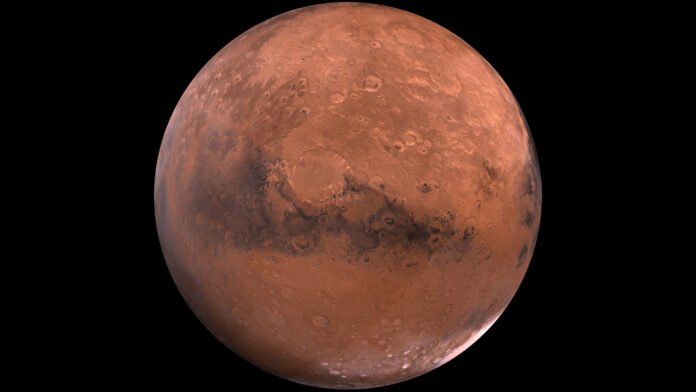Though Mars, the Red Planet, is a vast and inhospitable land today, scientists think it once resembled our very own Earth — the Blue Planet, if you will. More specifically, experts say Mars once had a warm, wet climate, and their belief is based on striking geological features on the now-barren world, such as vast valley networks likely carved by flowing water. In fact, a new team of researchers found evidence that Mars may have once had rain — and even snow.
However, there’s an important mystery buried in the story: It’s unclear where Mars’ water could have come from, and most climate models predict the world exhibits surface temperatures that are far too cold to sustain liquid water, raising questions about how those visible geological features could have formed.
“It’s very hard to make any kind of conclusive statement,” Amanda Steckel, a postdoctoral researcher at the California Institute of Technology’s Division of Geological and Planetary Sciences, said in a statement. “But we see these valleys beginning at a large range of elevations. It’s hard to explain that with just ice.”
Using computer simulations, Steckel and her team dove into what Mars might have looked like about 4 billion years ago during the Noachian epoch, a time when water may have dramatically shaped the planet’s surface. Their model, which was actually originally designed for Earth, was adapted to simulate how Mars’ landscape evolved near the equator. In this region, sprawling channel networks stretch from the highlands and drain into ancient lakes — possibly even an ocean. NASA’s Perseverance rover is currently exploring one of these sites, Jezero Crater, where a powerful river once poured into the basin.
“You’d need meters deep of flowing water to deposit those kinds of boulders [seen in Jezero],” said Brian Hynek, senior author of the study and a scientist at the Laboratory for Atmospheric and Space Physics (LASP) at the University of Colorado, Boulder.
Furthermore, what’s interesting is that hints about Mars’ temperate past are also seen in the geological features on Earth. “You could pull up Google Earth images of places like Utah, zoom out, and you’d see the similarities to Mars,” said Steckel.
The team tested two main ideas for how Mars’ valleys might have formed through precipitation: one where the planet was warm and wet, and another where ice melted temporarily at the edge of a large ice cap — representing a cold, dry climate.
Each scenario led to a very different-looking Mars, with valley origins appearing in drastically different locations.
In the ice-melt model, valleys mostly began at high elevations, near where the ice would have been. Though that scenario might have initially seemed to match parts of Mars today, the warm and wet version produced much wider spread valley networks forming everywhere from low-lying regions to more than 11,000 feet (3,353 meters) above the planet’s average surface.
The latter distribution lines up better with what we actually see on Mars: valley networks scattered across many different elevations and regions. While the ice-melt model fits some local features, the warm and wet version helps explain the planet’s landscape on a global scale. “Water from these ice caps starts to form valleys only around a narrow band of elevations,” Steckel said. “Whereas if you have distributed precipitation, you can have valley heads forming everywhere.”
This suggests that precipitation played a significant role in forming these valleys, indicating that ancient Mars likely had a climate warm enough to support rain — and even snow!
While more evidence is needed and answers to questions, such as how the planet stayed warm enough for rain or snow, are part of an ongoing investigation. Still, Hynek said the study offers valuable clues, not just about Mars, but about the early history of Earth as well.
“Once the erosion from flowing water stopped, Mars almost got frozen in time and probably still looks a lot like Earth did 3.5 billion years ago,” he said.
The team’s study was published on April 21 in the Journal of Geophysical Research: Planets.


